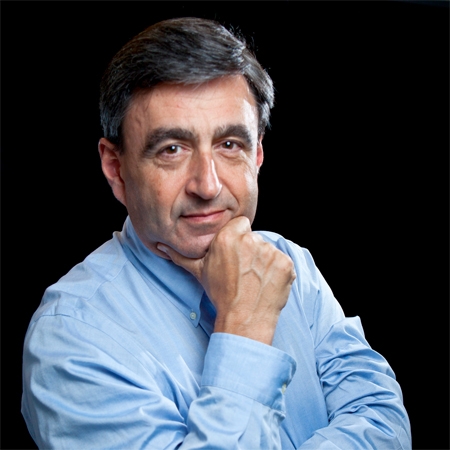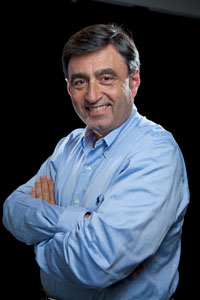News
Eric Mazur teaches AP 50, a hands-on, project-based introduction to applied physics for undergraduates. (Photo by Eliza Grinnell, SEAS Communications.)
The following interview is excerpted from an article published this month on the website EvoLLLution—"illuminating the lifelong learning movement."
Eric Mazur is area dean of Applied Physics at Harvard University and Balkanski professor of physics and applied physics. Since introducing the flipped model to his classroom, Mazur has seen a great response from his students, both in their attitudes and in their grades. In this interview, Mazur explains the benefits of this approach, and how it will redefine the role of post secondary educators in 10 years’ time.
1. How long has it been since you first experimented with the flipped classroom model, and how has it changed your teaching experience?
Well, it's been quite a while. It started in 1991, so 22 years ago.And, let me tell you, I made the change overnight. As I started to teach a new semester, I decided, “Okay I’m going to change my approach,” and I have never looked back.
In fact, whenever I lecture for professional reasons, at a conference or anything else, and I don’t have an ability to get immediate feedback from my audience as I get from my students, I feel totally lost. So, I couldn’t even go back if you pointed a gun at my head.
2. When you started the flipped classroom approach in 1991,what style of lecture did you send students home with? Was it an audio lecture, or was it something a little more interactive as a video?
I used the greatest invention in information technology, called the book. Essentially I had the students read the textbook before coming to class, rather than having me regurgitate the textbook in class.
In fact, a lot of people think that the flipped classroom consists of having people look at video lectures, but you don’t need a video lecture. In fact, most video lectures are just as boring and useless as live lectures because you cannot really pause and think. Yes, you can hit the pause button, but very few people do that. In fact, most students, when they look at online lectures, put the playback speed at1.2 or 1.5 in order to go through it faster, rather than more slowly.The good thing about reading is, you can put the book down for a moment and think. But, in any case, what I want to point out is that the idea of the flipped classroom is much older than most people think.
If you go back to the early 1900s at my own institution of Harvard,in the law school, they started implementing the case study method,which I think is, in a sense, first implementation of the flipped classroom. Instead of teaching the law to the students, the professors were teaching the practice of the law by having students read cases before class and then discussing the cases in class. So I think, you know, there’s nothing really new; the word “the flipped classroom” was not used. But the case study method is, in a sense, one of the first implementations of the flipped classroom.
When I started doing what I did, I didn’t call it the flipped classroom. I called it “Peer Instruction” and I basically said the following: I said, “Look, education is a two-step process. The first step, you need to transfer information. In the second step, the learner needs to do something with that information — build mental models, make sense of it, be able to see how that information and the knowledge embedded in it applies to the world around us.”
Topics: Academics, Applied Physics
Cutting-edge science delivered direct to your inbox.
Join the Harvard SEAS mailing list.
Scientist Profiles
Eric Mazur
Balkanski Professor of Physics and Applied Physics




